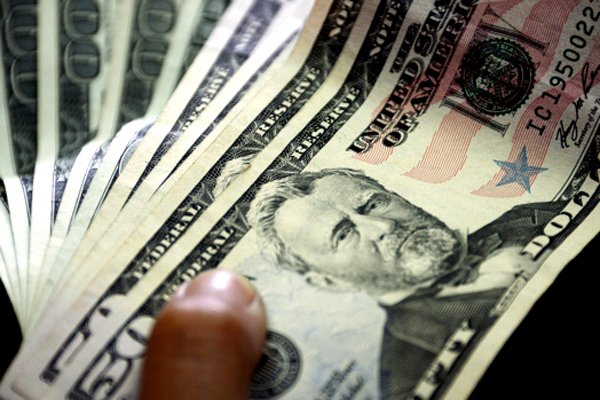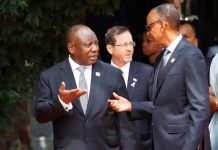Zimbabwe’s US$8,2 billion 2019 national budget, presented by Finance minister Mthuli Ncube at a time the US dollar was officially trading at par with the country’s quasi-currencies on November 22 last year, has effectively shrunk to RTGS$2,6 billion using the official rate due to currency and exchange rate volatility.
It is now about RTGS$2 billion using the parallel market rate.
The official rate was US$1:RTGS$3,1 yesterday. The alternative market rate was US$1:RTGS4,2.
This came as the International Monetary Fund (IMF) this week warned Zimbabwe would slide into recession this year. Previous forecasts by the IMF had projected annual economic growth of at least 4,2%, but now the economy is seen contracting by as much as 5,2%.
There are also fears the country is heading for stagflation — a situation in which the inflation rate is high, economic growth rates and production low, and unemployment high.
Earlier projections had been based on the hope of a resurgent mining sector and an anticipated increase in foreign direct investment.
The prediction came at a time the Zimbabwean government and the IMF agreed on a Staff-Monitored Programme (SMP) as part of measures to stabilise the economy which is in the doldrums. The announcement was made while Ncube and his team are in Washington DC for IMF and World Bank spring meetings which begin today.
Although Ncube was vague when he presented the budget on whether it was functionally premised on US dollars or RTGS, a distinction which suggests it was in RTGS is evident when he proposes duty in foreign currency for motor vehicle purchases and what he deemed luxury goods.
Government was insisting the US dollar was trading at par with Zimbabwe’s quasi-currencies — the bond note, RTGS and mobile money — hence his seeming rationale that the budget was in US dollars, although taxes and other revenues were largely being collected in quasi-currencies.
The issue was never clarified and unleashed confusion to the people and market.
However, on February 20, Reserve Bank of Zimbabwe governor John Mangudya, in his monetary policy statement, officially devalued local quasi-currencies against the US dollar, fixing the exchange rate at US$1:RTGS$2,5. The US dollar has, however, gained against the RTGS dollar. It was trading at US$1:3,14 last night.
The devaluation has had a far-reaching impact on the national budget, including Gross Domestic Product figures, as well as companies’ budgets and accounting systems. Pensions and other savings have been eroded due to devaluation and continued exchange movements. Companies are sinking as a result of exchange rate risk.
Presenting the government’s economic blueprint, Transitional Stabilisation Programme (TSP), in October last year, Ncube rebased the GDP from US$18 billion to US$25,8 billion, an increase of almost 40%. He said GDP is forecast to grow to US$29 billion in 2019 and further to US$32,7 billion in 2020, but the projections have been decimated by currency and exchange rate volatility.
In real exchange rate terms, Zimbabwe’s GDP is slightly above US$6 billion.
Former Finance minister Tendai Biti said Ncube presented the 2019 budget in RTGS terms at a time the exchange rate was 1:1, and as a result the budget has now been reduced to just above US$2 billion due to exchange rate shifts.
“That is what has effectively happened and what it actually means,” Biti said. “The real size of the budget, taking into consideration exchange rate movements, is now consistent with the size of the economy and economic activity. That’s the reality. That means the minister’s numbers and projections have been affected and disrupted. However, in terms of consumption in US dollar terms, government will spend around US$5 billion and given the real size of the budget (US$2 billion), it means the budget deficit will be around US$3 billion.”
Biti said currency and exchange rate volatility were wreaking havoc in the economy. He said even accounting has become a nightmare because of that.
“There is chaos in managing the economy. We are plunging into a recession as the IMF said. The SMP is not going to help much. The question is: who is going to give substantial money or invest meaningful capital in such an environment where currency, exchange rate and even accounting is big a problem?”
Owing to Ncube’s vagueness and vacillations, many people, including economic analysts and the market, were of the view that he presented the budget in US dollars.
Hence, the uproar when he announced in a joint statement with Agriculture minister Perrence Shiri that white commercial farmers would be allocated RTGS$53 million as compensation.
During the budget presentation, he had indicated that US$53 million would be set aside to compensate farmers based on the 1:1 exchange rate at the time.
“Ncube presented a budget for 2019 of US$8,2 billion. On page 36 of the budget statement, point 76, Ncube states: ‘Premised on a nominal GDP of US$31,6 billion (3,1% growth), a budget of US$8,2 billion (including retentions of US$400 million) is being proposed for the 2019 fiscal year, against expenditure bid proposals by line Ministries well in excess of US$15 billion, which is beyond the revenues that can be generated even our current GDP’,” Zimbabwe Independent columnist Brett Chulu said this week.
“On the compensation for farms forcibly acquired by the government, Ncube revealed in the same budget statement (page 85, point 305) that ‘Given the limited fiscal space, the 2019 Budget (sic) makes provision of US$53 million for payment of compensation to former farmers, to show commitment to this obligation.
“There is a dramatic shift as revealed in the press statement jointly presented this week by the Minister of Lands, Agriculture, Water, Climate and Rural Settlement and the Minister of Finance and Economic Development. The press statement titled ‘Implementation of Compensation of Former Farm Owners by the Government of the Republic of Zimbabwe’, on point 4, states: ‘Reflecting Government’s (sic) commitment to compensate former farm owners for farm improvements and recognising that a large number of farmers are still to be compensated, Government (sic) allocated RTGS$53 million in the 2019 National Budget for interim advance payments’.”
University of Zimbabwe economics professor Tony Hawkins said the devaluation of the local currency implied that government was now getting its revenue from inflation since its key revenue sources, imports and exports, tend to suffer from such a scenario.
“What it means is that imports will be a lot more expensive, translating to less revenue from there. Government will therefore be getting its revenue from inflation and expenditure will be higher because duty will be lower,” he said.
South African-based economic analyst Colls Ndlovu, who worked for the South African Reserve Bank, said the currency conundrum has become an economic albatross for Zimbabwe.
“The trouble is that the Zimbabwean 2019 budget was premised on the fictitious 1:1 exchange rate parity. When the smoke-and-mirrors policy was inevitably removed on February 20, the adverse repercussions of that were felt by the ordinary people, pensioners and companies. Businesses were hit hard, especially those with foreign debts,” Ndlovu said. “The root cause of this financial turmoil is currency and exchange rate issues. Of course, there are underlying root causes of the crisis and many other variables at play. Zimbabwe needs to understand that the financial crisis that is ravaging the economy has its roots in the extremely poor management of monetary issues by the monetary authorities. To restore confidence in the monetary system and the currency in particular, reforms are urgently needed. Zimbabwe needs to resolve the currency issues, among other problems, before stability can be restored.”






